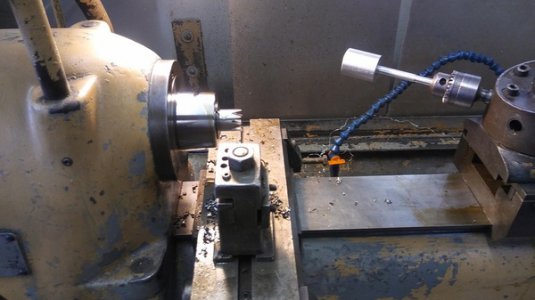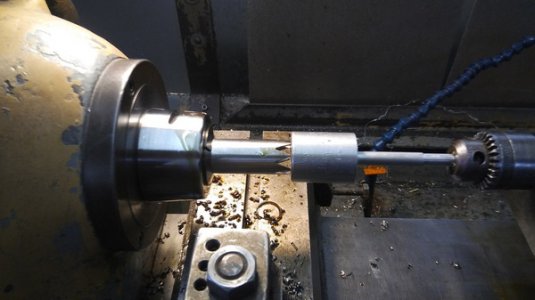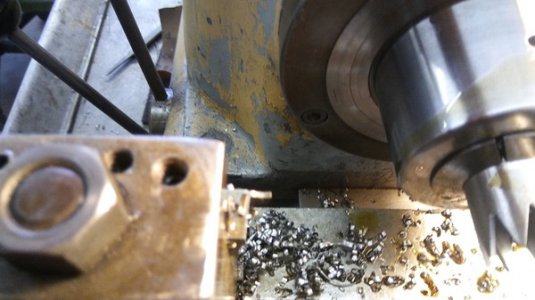I had to do a little project recently where I needed to make a "bushing" that was about .300 dia by about .300 thick. I had a much longer piece of steel stock, about 3 or 4 inches long, I could have cut a smaller piece on the abrasive cut off saw but, it was kind of a short piece and decided not to. But, of course that meant I had to face away ALL the stock I didn't need AND, had to hold that little tiny piece, that was the finished product, in the chuck.
So, it took forever and was just a stupid little piece to tighten up the shifter rod on a truck where the plastic bushing had worn down to nothing. It was held on with a cotter pin and it broke, I was doing a whole different project on the truck when he mentioned he had to tied it back together with a jump rope. I didn't even notice it till he mentioned it and it had no way of getting the correct bushing that late at night but HAD to get the truck done that night, he had to drive it to work the next day.
What might have done better?
I took the entire machine tool operations sequence in college to get my drafting and design degree years ago. The idea was that by having to actually make stuff we'd become better designers because we'd understand things like tolerances. For example, why you don't put a four place decimal on a drilled clearance hole, you really can't achieve that kind of accuracy with a drill. It all made sense than AND I learned I was actually pretty good at machining in the process. At one point when I got laid off from one design shop I worked as a machinist at a shop. It was great to have gotten that training that I never guessed I'd need. Now I have a small mill and lathe if I need to make something.
So how could I have made that simpler? What should I have done to cut the time? I don't have a good way of cutting stock, the only way I could have really done it better with what I have is to have put the stock in the vice and cut it off with a cut off wheel/die grinder.
Maybe I could have turned the diameter and then used a cut off tool, but I don't know how to make one, I can't remember how we did that in school and never had to do it in the field.
Thanks in advance,
Wayne








